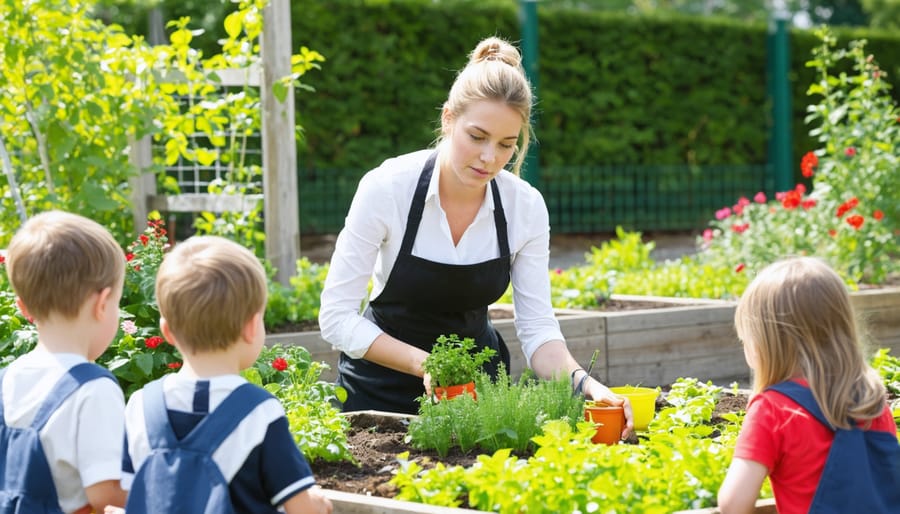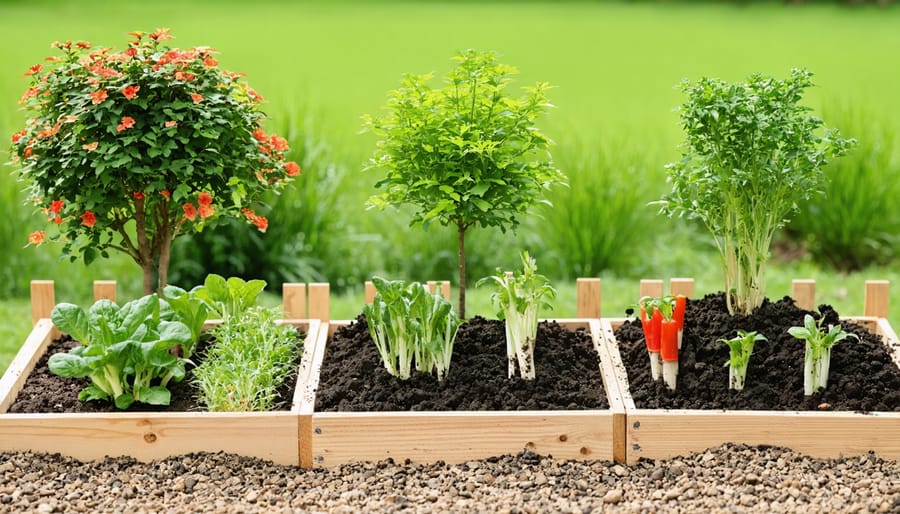Transform your classroom into a dynamic learning environment through co-teaching models that maximize student engagement and academic success. Integrating garden-based education with traditional curriculum becomes seamless when two educators combine their expertise and teaching strategies effectively.
Co-teaching breaks down traditional classroom barriers, allowing teachers to differentiate instruction, provide targeted support, and create inclusive learning spaces that benefit all students. Whether you’re partnering with a garden educator, special education teacher, or content specialist, understanding these six proven models empowers you to choose the right approach for your specific classroom needs.
From station teaching to parallel instruction, each model offers unique advantages that enhance student learning outcomes while making the most of both teachers’ strengths. These collaborative approaches have transformed classrooms across North America, leading to improved student achievement, increased engagement, and more effective delivery of cross-curricular content.
Let’s explore these six co-teaching models and discover how they can revolutionize your teaching practice, creating richer learning experiences that connect students with both academic content and hands-on learning opportunities.
One Lead, One Support: The Foundation of Garden Education

Practical Applications in the School Garden
School gardens offer perfect opportunities to implement various co-teaching models in dynamic outdoor classrooms. Science teachers might pair with math instructors to combine lessons on plant growth with data collection and graphing. English and agriculture teachers collaborate to help students write garden journals while learning about crop rotation. Special education teachers work alongside master gardeners to create inclusive planting activities that accommodate different learning styles. Social studies and garden educators team up to explore local food systems and indigenous growing practices. These real-world applications help students connect academic concepts with hands-on experience while fostering collaboration between educators with diverse expertise.
Station Teaching: Rotating Through Garden Learning Centers
Setting Up Effective Learning Stations
Create engaging learning stations by dividing your garden space into themed areas that encourage hands-on exploration and collaboration. Set up a soil testing station where students can analyze different soil types, a seed starting area for learning about germination, and a composting zone for understanding decomposition. Ensure each station has clear instructions, necessary materials, and enough space for small groups to work comfortably.
Include visual aids like plant identification charts and seasonal growing guides at each station. Rotate activities regularly to maintain student interest and accommodate different learning styles. Consider incorporating weather monitoring stations, pollinator observation areas, and harvest collection points to create a comprehensive learning environment.
Remember to make stations accessible for all ability levels and provide options for both independent and group work. Keep tools organized and labeled, and establish clear procedures for station transitions to maximize learning time.

Parallel Teaching: Maximizing Garden-Based Learning
Coordinating Parallel Lessons
To maintain consistency across parallel groups, establish clear learning objectives and ensure both teachers follow the same curriculum framework while allowing for individual teaching styles. Create shared assessment criteria and regularly compare notes on student progress. Use common planning templates and schedule brief check-ins before and after lessons to align teaching approaches. Consider rotating between groups periodically to maintain equal familiarity with all students. Share resources and materials equitably between groups, and develop consistent behavior management strategies. Document successful teaching strategies and challenges to refine the approach over time. Remember that while delivery methods may vary slightly, core content and learning outcomes should remain consistent for all students.

Alternative Teaching: Supporting Diverse Learners in the Garden
In the garden, alternative teaching methods shine as they accommodate diverse learning styles and abilities. By implementing collaborative teaching strategies, educators can create an inclusive environment where all students thrive while learning about sustainable agriculture.
Visual learners benefit from demonstration stations where they can observe seed starting, transplanting, or composting techniques. Kinesthetic learners excel with hands-on activities like soil testing or harvest collection. For auditory learners, incorporating garden-themed songs, storytelling, or verbal instructions helps reinforce concepts.
Consider creating designated zones within the garden for different learning approaches. A sensory garden area allows students to explore through touch and smell, while a quiet observation space supports those who need minimal distraction. Small group rotations enable teachers to provide specialized instruction while maintaining the flow of general garden activities.
Adaptive tools and modified activities ensure all students can participate meaningfully. Raised beds at different heights accommodate various physical abilities, while color-coded plant markers help visual processors identify different crops. Breaking tasks into smaller steps supports students who benefit from structured learning sequences.
Remember to celebrate different approaches to problem-solving in the garden. Some students might excel at designing efficient watering systems, while others show natural talent for identifying beneficial insects or creating garden art.
Team Teaching: Collaborative Garden Instruction
Team teaching in the garden creates a dynamic learning environment where two educators work together seamlessly to deliver engaging lessons. This collaborative approach allows teachers to combine their expertise, whether it’s pairing a science teacher with a garden educator or partnering classroom teachers with local farmers involved in farm-based learning programs.
In practice, both teachers actively participate throughout the lesson, taking turns leading different activities while supporting each other. For example, one teacher might demonstrate proper planting techniques while the other connects the activity to scientific concepts like plant biology or soil composition. This dual perspective enriches students’ understanding and provides multiple entry points for learning.
The beauty of team teaching lies in its flexibility. Teachers can alternate roles smoothly, with one handling hands-on demonstrations while the other circulates to provide individual support. During harvest time, one educator might guide students through proper picking techniques while their partner facilitates a math lesson on weighing and measuring produce.
This model works particularly well for interdisciplinary lessons, such as combining environmental science with practical gardening skills. The collaborative approach also allows teachers to model effective communication and teamwork, demonstrating the cooperative nature of sustainable agriculture to their students.
For successful implementation, teachers should plan lessons together, clearly define their roles, and maintain open communication throughout the session. This ensures smooth transitions and maximizes the educational benefits for students.
Complementary Teaching: Blending Expertise
In complementary teaching, two educators work together to blend their unique expertise, creating a rich learning environment that connects agricultural concepts with core academic subjects. For example, a science teacher might collaborate with a master gardener to demonstrate photosynthesis using the school garden as a living laboratory. The traditional teacher handles curriculum standards while the agricultural expert provides real-world context and hands-on demonstrations.
This model shines when teaching topics like soil chemistry, where students can learn scientific principles while getting their hands dirty testing soil pH levels. Math lessons come alive through garden planning and crop yield calculations, while language arts flourish through nature journaling and garden-themed creative writing exercises.
Success stories from schools implementing this model show improved student engagement and better retention of both academic concepts and agricultural knowledge. One elementary school reported that their third-grade students scored 15% higher on science assessments after incorporating garden-based learning into their curriculum through complementary teaching.
To maximize effectiveness, partners should meet regularly to align their expertise and ensure lessons flow naturally between classroom concepts and garden applications.
Co-teaching models offer powerful opportunities for schools and CSA partners to create enriching garden-based learning experiences. By selecting and implementing the right model, educators can combine classroom expertise with hands-on farming knowledge to deliver engaging lessons that stick. Success comes from careful planning, open communication, and a willingness to adapt teaching styles. Start small with one model, evaluate its effectiveness, and gradually expand your collaborative teaching approach to maximize student learning in the garden classroom.

